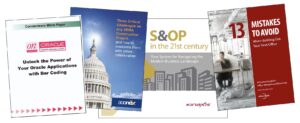White paper must-do #2: Create an executive summary early
Must-do #1 covered holding a “kickoff call” to discuss the white paper’s purpose and scope.
This article covers creating a brief summary before you draft the full document.
 Hint: If you’re the client, ask for this as your first deliverable.If you’re the writer, explain this is how you always work.
Hint: If you’re the client, ask for this as your first deliverable.If you’re the writer, explain this is how you always work.
After the kickoff call, the writer gathers a lot of background from various sources: client materials, SME interviews and independent research.
Now, the writer boils down this research into a brief summary that captures the main thread of the argument for the client’s team to review.
What is an executive summary?
White paper expert Jonathan Kantor identifies two main types of executive summaries:
- A preview, which is like a movie trailer with intriguing highlights to attract an audience
- A synopsis, which is a brief outline of the full contents of the document.
Hint: I prefer to create a one-page synopsis as a first draft of the executive summary that will appear in the final white paper.
The client then circulates this draft summary to all reviewers with a deadline for their comments.
Even the busiest executive can usually find time to read and comment on a one-page summary. If there are any differences of opinion from reviewers, the client can hold internal discussions to resolve them.
The client and writer pass the summary back and forth, making refinements until all reviewers approve the proposed direction.
Why bother creating an executive summary?
Many writers simply dive in and start writing a 10-page white paper.
This is very risky. Without a direction blessed by the client, a lot of what’s written could end up being trashed.
It’s much better for the writer to provide a relatively short deliverable to check the direction… and for reviewers to treat this as a serious exercise that determines the shape of the final white paper.
Look at everything that delivering an executive summary can achieve:
- A fast deliverable that keeps the project moving
- No time wasted writing a long document
- No time wasted reviewing a long document.
Writing an executive summary
Writing an executive summary certainly takes work, because it’s the heart of the white paper.
Writing this one page can take me a day or two of intense concentration. I need to decide what to include, what to leave out, how to structure the white paper’s argument and how to back it up with proof points.
 Doing all this hard work up-front delivers a bonus later.Once the executive summary is complete, writing the full white paper is comparatively easy, rather like “filling in the blanks.”
Doing all this hard work up-front delivers a bonus later.Once the executive summary is complete, writing the full white paper is comparatively easy, rather like “filling in the blanks.”
Expanding every sentence in the summary to a paragraph or two generates a final document about the right length.
Hint: Some writers like to read the summary aloud, or have their computers read it to them to help polish up every phrase.
The writer can start the summary as soon as the research is reasonably complete.
Consider this step complete when an executive summary for the white paper has been approved by all reviewers.
Of course, the original summary is usually refined during this process, as the writer works back and forth between the main body and the summary. But again, polishing up an existing draft is much faster and easier than writing all-new material from scratch.
By hammering out a one-page summary of the white paper early, the writer and client take another must-do step along the path to a smooth and successful white paper.
The final article of this series describes why you must wrap up your white paper in a business-like way.
Want to hear whenever there’s a fresh article on this site? Subscribe here to stay in the know on long-form content. From time to time, we’ll also send you word about some great new resource or training. And you can unsubscribe any time.




So this summary goes at the front then, rather at the back?
Both places! So this follows the timeless communication advice: First you tell them what you’re going to tell them (executive summary), then you tell them (main body), and then you tell them what you told them (conclusions). Some may say this is repetitive, but it really accommodates multiple reading paths through a document. And a little repetition helps the message sink in. Ask any teacher.